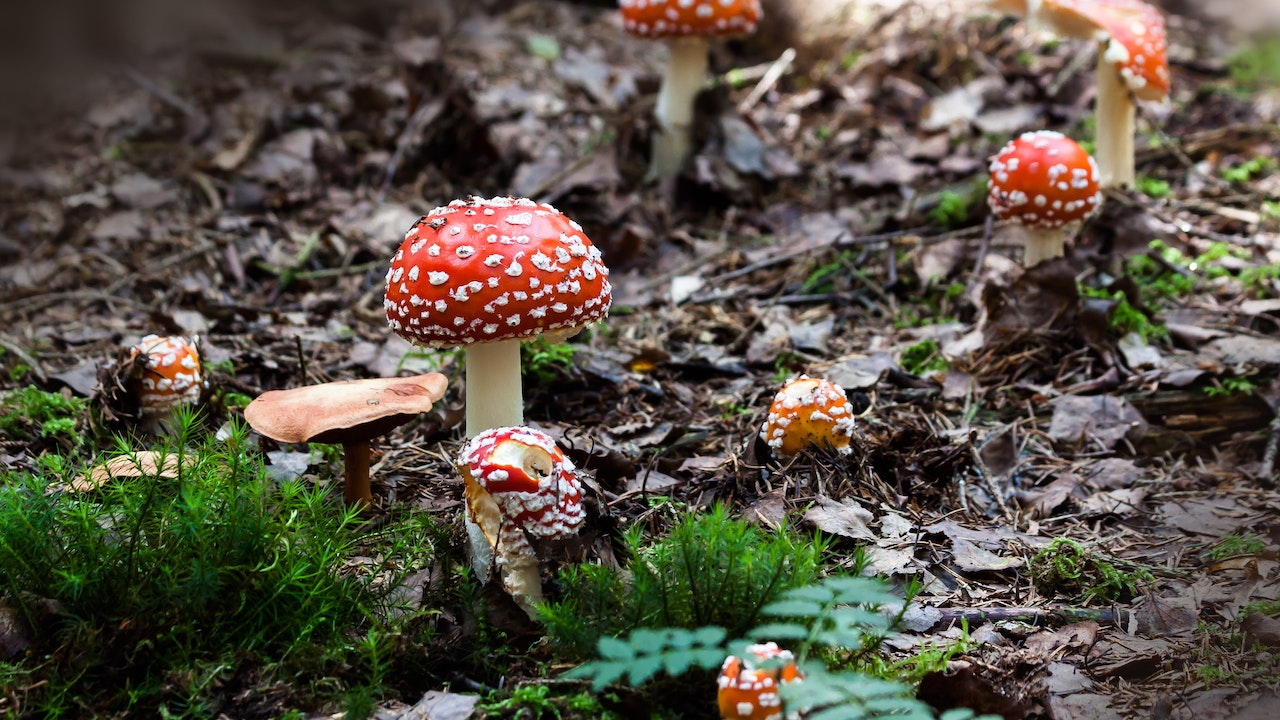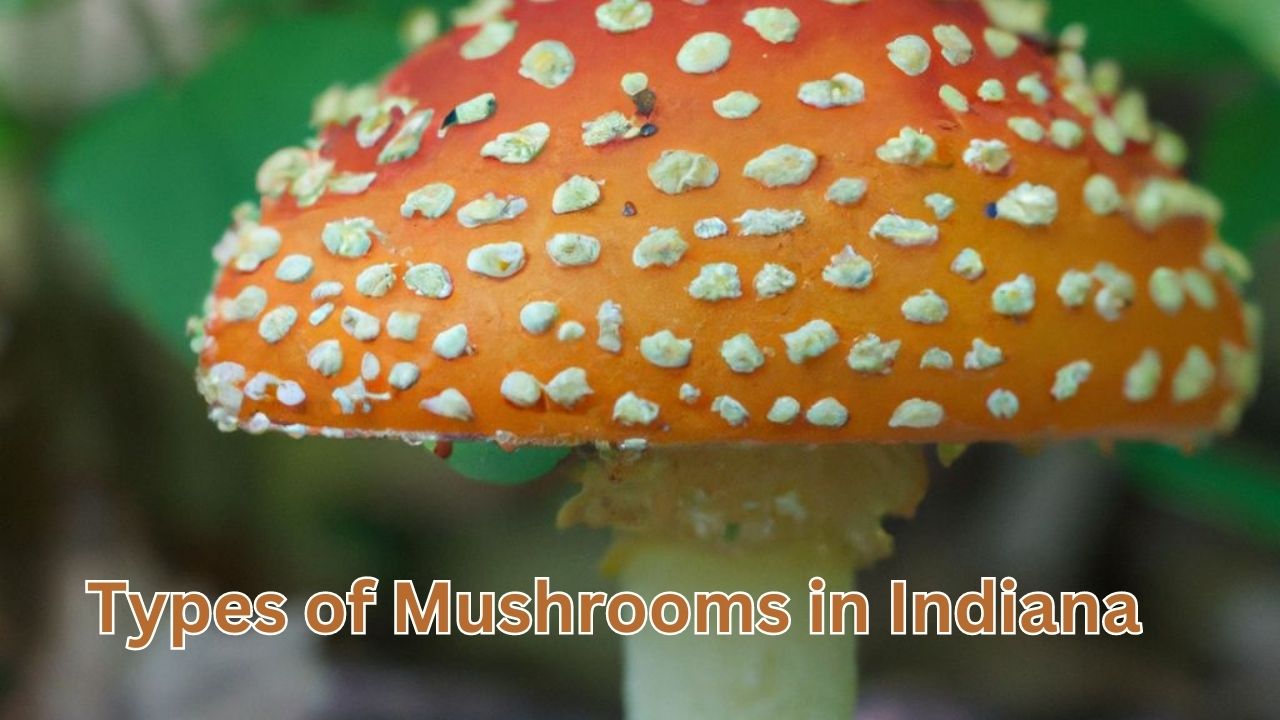If you are looking for types of Mushrooms in Indiana, here is the answer. The mushroom world is vast and diverse, and Indiana is no exception! This state has a range of mushrooms that can be found. From the majestic Morel to the vibrant Chicken of the Woods, there’s something for all mushroom fans.
Hen of the Woods mushroom has a unique appearance, like a cluster of ruffled feathers. It also has a savory flavor, making it popular with cooks. Lion’s Mane mushroom looks like a lion’s mane and has a delicate texture and a mild seafood flavor. Enjoy it raw or cooked!
The Golden Chanterelle mushroom is a prized fungus with a vibrant orange-gold color. It has a fruity aroma when cooked, and its delicate taste pairs well with meats and veggies.
When foraging for mushrooms in Indiana, be careful and seek expert advice. Get field guides or attend workshops to learn more. Join organized hunts or guided tours to get insights from experts.
Discover the array of mushrooms and their roles in ecosystems. So, grab your basket and explore nature’s treasure troves! Unravel the captivating story behind each mushroom. Bite into one of these Indiana mushrooms and you’ll be feeling fun(gi) for the rest of the day!
Table of Contents
Common Edible Types of Mushrooms in Indiana
In Indiana, there are several edible mushrooms. These provide a unique culinary experience with their distinctive flavors and textures! Here are some of the most commonly eaten mushrooms in Indiana.
| Mushroom Name | Cap Color | Spore Print Color | Habitat |
|---|---|---|---|
| Morel | Brown | Creamy White/Buff | Forests |
| Chanterelle | Yellow/Orange | White to Pale Yellow | Moist Areas |
| Chicken of the Woods | Bright Orange | Whitish-Yellow | Deciduous Trees |
| Maitake | Dark Brown | White | Hardwood Forests |
Each mushroom has its own identification features, such as cap color, spore print color, and habitat preference. This helps enthusiasts safely forage for them in the wild.
Morels have been around for centuries. They hold cultural significance and have become popular in spring. For many Hoosiers, the hunt for morels has become a beloved tradition.
Before eating any wild mushrooms, it is important to consult an expert or guidebook. Practice caution and respect nature while eating Indiana’s edible mushrooms!
Warning: These toxic mushrooms in Indiana are so dangerous, they make the ‘Indiana Jones’ theme song play in reverse every time you eat one.
Toxic Mushrooms in Indiana
Indiana is a home to many toxic mushrooms! If consumed, they can lead to serious health issues. To help you stay safe, here are some of the most notable toxic mushrooms found in Indiana:
| 1. Death Cap (Amanita phalloides) | This deadly mushroom looks like an edible one, and can cause liver and kidney failure. |
| 2. Destroying Angel (Amanita bisporigera) | It’s white and alluring, but ingesting it can lead to organ failure. |
| 3. Panther Mushroom (Amanita pantherina) | Its toxins can cause hallucinations, vomiting, and convulsions. |
Though these are the most common toxic mushrooms in Indiana, there are others too. Before attempting to identify and consume wild mushrooms, make sure to get expert advice or consult a mycologist.
Don’t take risks! FOMO shouldn’t take control. Your health is more important than finding rare mushrooms. Take advantage of local resources, join guided mushroom hunts or educational programs to learn more about fungi. Stay safe and enjoy the fascinating world of mushrooms responsibly!
Medical Benefits of Mushrooms
Mushrooms are an amazing organism, with many medicinal advantages that are of interest to researchers and health fans. Research shows mushrooms may have many healing uses due to their special bioactive compounds and nutriments.
- Powerful Anti-inflammatory Properties: Specific mushroom species have remarkable anti-inflammatory effects, possibly helping to reduce the risk of chronic diseases like heart disease and diabetes.
- Upgraded Immune Assistance: Mushrooms contain beta-glucans – compounds renowned for their immune-enhancing properties. Consuming them regularly may give a stronger immune system and boost the body’s ability to fight infections.
- Anti-Cancer Possibilities: Reishi and shiitake mushrooms contain substances that exhibit anti-cancer effects in lab tests. These compounds could take part in stopping or slowing down the growth of some types of cancer cells.
- Improved Brain Health: Lions Mane mushroom is getting attention for its potential mental benefits. It could enhance memory, focus, and all-round brain power by encouraging the production of nerve growth factors.
- Gut Health Promotion: The fiber in mushrooms works as prebiotics – feeding beneficial gut bacteria. This could support digestion, help absorb nutrients, and improve overall gut health.
Mushrooms are truly an exceptional natural resource with lots of unexploited potential for medicine. Though these facts give insight into some main benefits, further research still reveals other secret advantages to explore.
Pro Tip: When adding mushrooms to your diet for potential health benefits, talk to a healthcare professional or a dietitian for tailored advice on dosage and suitability.
Who’d have thought mushrooms could be so fascinating? Get ready for a wild fungal journey as we explore the awesome universe of Indiana’s mushroom madness!
Interesting Facts about Mushrooms
Mushrooms are awe-inspiring and diverse. Let’s discover some awesome facts about these amazing fungi!
Did you know there is a wide range of mushroom species? These include morels, shiitakes, and portobellos. Plus, mushrooms are low in calorific value and fat, making them a healthy meal choice.
Also, some mushrooms contain medicinal properties that can boost the immune system and reduce inflammation. Mushrooms flourish in damp, dark environments with organic matter. Moreover, mushroom cultivation is eco-friendly due to its efficient use of resources.
Historically, mushrooms have been used for culinary delights, natural dyes, and medicinal treatments. When foraging for wild mushrooms, make sure you have the right knowledge or ask an expert guide to avoid toxicity risks.
So, next time you come across a mushroom, take a moment to enjoy its beauty and remarkable contributions to the world.
And, as our mushroom journey comes to an end, remember: Indiana may not have the cheesiest mushrooms, but it sure knows how to keep things fungi!

Frequently Asked Questions
Q1: What are the different types of mushrooms found in Indiana?
There are several types of mushrooms that can be found in Indiana, including morel mushrooms, shaggy manes, chicken of the woods, chanterelles, oyster mushrooms, and puffball mushrooms.
Q2: Are morel mushrooms common in Indiana?
Yes, morel mushrooms are quite common in Indiana. They tend to grow in wooded areas, particularly near dead or decaying trees. Morels are highly sought after by mushroom enthusiasts due to their unique and delicious flavor.
Q3: Are there any poisonous mushrooms in Indiana?
Yes, there are poisonous mushrooms that can be found in Indiana. It is crucial to have proper knowledge and identification skills before consuming any wild mushrooms. It is always recommended to consult an expert or refer to reliable mushroom identification resources.
Q4: Can you eat all types of mushrooms found in Indiana?
No, not all wild mushrooms found in Indiana are safe for consumption. Some mushrooms can be toxic or even deadly if ingested. It is essential to accurately identify the species before consuming them and to exercise caution.
Q5: Where can I find edible mushrooms in Indiana?
Edible mushrooms can be found in various habitats throughout Indiana. Forested areas, particularly those with a mix of hardwood and conifer trees, are often good places to search. It is advisable to explore public lands or seek permission from private landowners before foraging.
Q6: Are there any rare or unique mushrooms in Indiana?
Indiana is home to several rare and unique mushroom species. The state’s diverse ecosystems provide suitable conditions for a wide variety of mushrooms. Some examples of rare mushrooms found in Indiana include the violet toothed polypore and the Indian pipe fungus.
Final Thoughts
Indiana has a great variety of mushrooms! From the colorful Fly Agaric to the graceful Enoki, there’s no shortage of interesting fungi. Plus, there’s morel mushrooms! Foragers and chefs value their distinct flavor and texture. Morels only appear in certain regions of Indiana during springtime, and they’re a true delight for nature-lovers.
The Hoosier Mushroom Society is also important. It started in 1977 and has helped people learn and conserve mushrooms in Indiana. They organize hunts and provide resources for identification.
Exploring Indiana’s mushrooms is an amazing journey. With each discovery, we’re reminded of the state’s natural beauty and the fascinating lives of these organisms.

